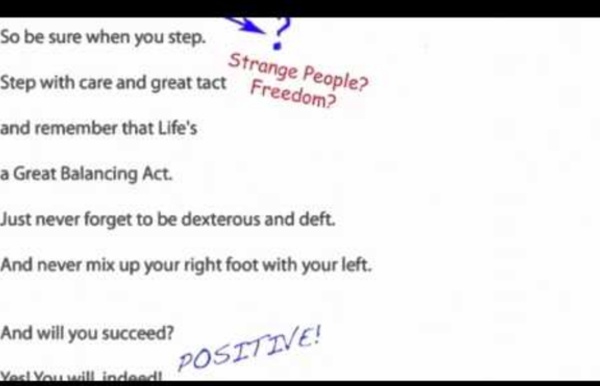



Five close reading strategies to support the Common Core I walked in to my first college class, Political Science 101, eager to learn. For my inaugural college assignment, my professor asked the class to read the first three chapters of the textbook for the next class period. That night, I returned to my dorm room, determined to learn everything I could in those three chapters. However, when I opened my textbook it was unlike anything I had read in high school. I shrugged, pulled out my highlighter and started highlighting. I quickly realized that I had no real game plan for reading this complicated textbook. Flash forward to my first few years of teaching. While this method may have been slightly more effective than what I used that first day of college, it was still too vague and ambiguous for my students. Last fall, I attended an AVID workshop about critical reading strategies. 1. The Common Core asks students to be able to cite and refer to the text. 2. 3. Telling students to simply underline “the important stuff” is too vague. 4. 5.
Ed-Tech Usage Levels Are Low: What Should Schools Do? Evaluating the usage of ed-tech products is tricky, complicated, and oftentimes confusing. But it can be done. Consider the case of the Granite County school district in Utah. It partnered with a company called LearnPlatform to measure whether time spent on three particular pieces of software led to a bump in student achievement. The district found that one program had great results for English-language learners and Native American students. But most districts aren't nearly as sophisticated as Granite. Report after report cites low usage numbers for software, a problem driven largely by districts not thinking through how an ed-tech product should be used prior to buying it and then setting realistic expectations for usage, experts say. Complicating matters is the fact that there isn't a clear consensus on just what constitutes a "good" usage rate: Is it 25 percent, 50 percent, or 100 percent? But that's easier said than done. 'Waste of Resources' Anton Inglese, chief financial officer 1. 2.
Understanding Differentiation in Order to Lead: Aiming for Fidelity to a Model by Carol Ann Tomlinson and Marcia B. Imbeau "I'm glad you found it useful," I responded. She paused as she searched for her next comment. She was puzzled. Misunderstanding: Differentiation is a set of instructional strategies.Reality: Differentiation is a philosophy—a way of thinking about teaching and learning. The purpose of this chapter is to provide a brief summary of what we call differentiated instruction; a full explanation of the elements of this approach is available in other resources (e.g., Tomlinson, 1999, 2001, 2004; Tomlinson, Brimijoin, & Narvaez, 2008; Tomlinson & McTighe, 2006). Key Elements of Differentiated Instruction Differentiation can be accurately described as classroom practice with a balanced emphasis on individual students and course content. Content The knowledge, understanding, and skills we want students to learn. Process How students come to understand or make sense of the content. Product Affect How students' emotions and feelings impact their learning. Readiness
Case Study: Clever's Troubled Effort to Help Schools Track Ed-Tech Use Early in 2018, ed-tech company Clever launched a new product aimed at helping tens of thousands of schools tackle a vexing challenge: determining whether students are actually using the software and learning apps on which the K-12 sector spends billions of dollars each year. Less than 18 months later, though, it pulled the plug. Clever announced it was “sunsetting” the effort and moving in a new direction. What happened? “What we found once we were in market was that it proved to be a nice-to-have more than a must-have for a lot of district leaders,” Dan Carroll, the company’s co-founder and chief product officer, said in a July interview. A Multi-Pronged Problem That analysis will likely come as a disappointment to those K-12 CTOs and CIOs who describe the opacity around ed-tech usage as a significant—and multi-pronged—problem. A number of products on the market aim to help. BrightBytes has tried to highlight the problem of scattershot usage. Unanticipated Complications Matt Raimondi